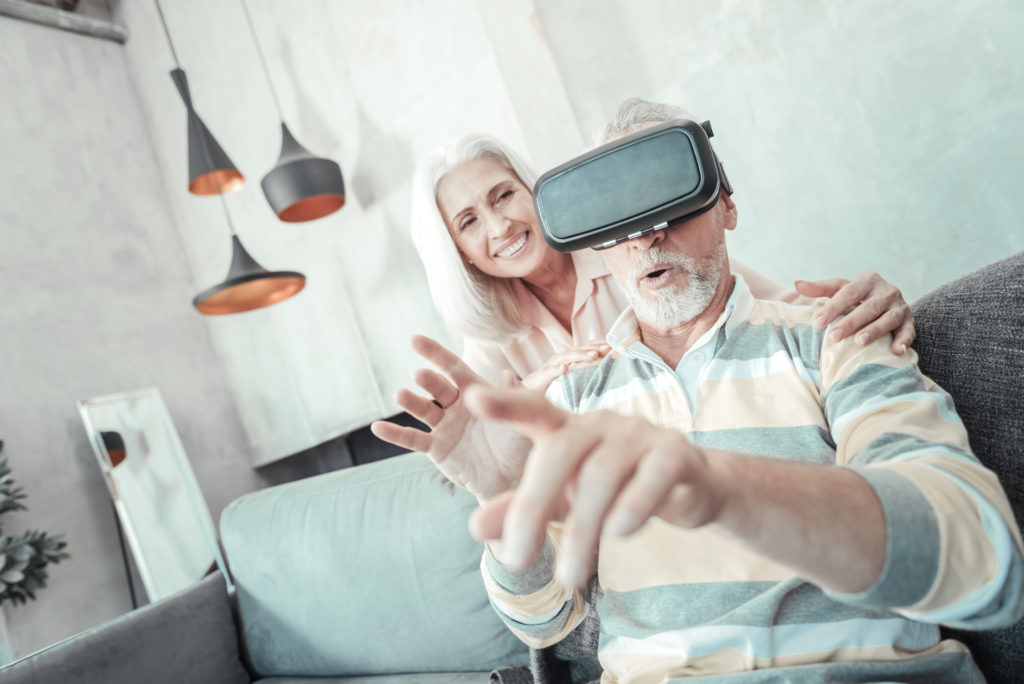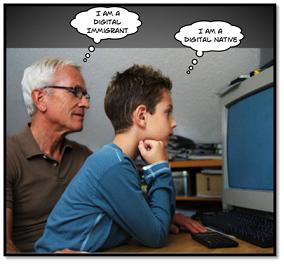
You know all the jokes about Boomers – perhaps even your parents or grandparents.
They’re the ones whose VCR clocks were always blinking “12:00.”
Or were flummoxed by trying to download an app on their iPhones.
Or who couldn’t figure out how to post photos or videos on Facebook.
Or couldn’t keep their usernames and passwords straight.
Or who couldn’t talk to Alexa.
Or who couldn’t figure out how to preset radio stations in their new cars.
For years, younger generations of snarky consumers have mercilessly mocked their elders for their lack of tech acumen. It actually made Millennials bask in the knowledge they are smarter than their older relatives when it came to basic gadgetry and technology.
But COVID may have been the great equalizer. That’s because many seniors (those 50 and older, according to AARP) got tossed into the deep end of the digital pool during the pandemic, tasked with figuring out how to stay afloat in the tech world.
And many ended up learning how to navigate the cyber landscape. That’s because in order to function in 2020 – to communicate with friends, family members, and colleagues – they had to learn the basics: how to text, write/send/receive emails, log-in/browse/watch Netflix, shop/order from Amazon Prime, and learn how to use Facetime, Zoom, and other virtual meeting platforms so they could see and talk to their grandkids.
members, and colleagues – they had to learn the basics: how to text, write/send/receive emails, log-in/browse/watch Netflix, shop/order from Amazon Prime, and learn how to use Facetime, Zoom, and other virtual meeting platforms so they could see and talk to their grandkids.
Up to that point, all this stuff was still optional. Seniors could stubbornly dig in their arthritic heels and refuse to learn how to use computers, laptops, and smartphones, and the software that came with these gadgets.
COVID changed all that. The “senior set” had to figure it out – or get left behind. And that meant dealing with loneliness, alienation, and isolation, whether in the work space or with families.
Instead, most Boomers not only came to the party – in many cases, they became pretty adept at this stuff.
A new study of 2,000 Americans (half of whom are over 65) conducted by OnePoll reveals mature adults increased their tech IQ during the pandemic.
A sampling of their surprising and insightful findings:
- One in three of the 65+ crowd now prefers texting to picking up the phone
- More than four in ten (43%) have favorite emojis
- One in ten even send GIFs
- One in three embrace social media and streaming video to connect with younger family members
We saw a similar phenomenon in Techsurvey 2021, conducted in January/February of this year – ten months or so into the pandemic. We had a massive sample of Boomers take part in the survey – north of 20,000 respondents.
When we created a Media Usage Pyramid for Baby Boomers, even we were astonished at how quickly they’ve caught up to their kids – and grandkids – during what we called the Year of COVID.
The column on the far right shows the previous year’s levels, and the thumbs-up emojis indicate key growth areas:

Like the OnePoll study, we see some fascinating trends on the pyramid. First and foremost, nearly nine in ten (89%) carry a smartphone. That nugget speaks volumes about how their lives have been impacted by having myriad media options at the push of an app. Note than eight in ten (80%) are also connected on social media (more Facebook than any other platform), opening up even more connectivity.
And then there are the growth spurts – specifically, streaming. Now nearly seven in ten (69%) stream video weekly or more often; with audio streaming, more than six in ten participate at least weekly. Both are up several percentage points from last year.
Not surprisingly, smart TVs and “hearables” (Bluetooth earbuds and headphones) are becoming more commonplace, too. Both gadgets, of course, enable more digital media consumption from both the audio and video spectrums.
As the OnePoll study shows, about a third (32%) of those 65 or older now take part in Zoom calls (or other virtual meeting platforms) at least weekly, allowing them to stay in touch with the people who mean the most to them. In the Year of COVID, there was also a marked jump in smart speaker ownership among Boomers. The same is true with podcast listenership, a media activity more typically associated with Millennials.
But not anymore.
 The dust has not settled with COVID. We know there are more chapters to come, most of which we can’t attempt to predict or anticipate. But one of the things that is a known factor is the increase in gadgets and technology usage since the outbreak of the pandemic.
The dust has not settled with COVID. We know there are more chapters to come, most of which we can’t attempt to predict or anticipate. But one of the things that is a known factor is the increase in gadgets and technology usage since the outbreak of the pandemic.
Consumers from all demographic groups are integrating technology into their media diets – including Boomers for whom digital media skills must be learned, unlike their grandchildren who are digital natives.
It’s also a reminder to programmers of stations that appeal to older demos that your audience is “a changin’.” More and more, they are adapting to the world around them. Unlike past generations more set in their ways, today’s Boomers appear to be more curious and resilient.
As broadcast radio usage and loyalty goes, this generation continues to remain loyal to their favorite stations and personalities. As their media habits evolve, radio programmers will need to lean even harder into digital content and delivery.
As streaming becomes a bigger factor in location listening, more of those Boomers can now download your app, bark out the right command to Alexa, and press the “play stream” button on your website.
Of course, they still may be struggling with all those passwords.
(Aren’t we all?)
- Media And Technology In 2025: Believe It Or Not! - April 18, 2025
- In Radio, You Just Never Know - April 17, 2025
- The Secret To Making A Great Podcast (And Great Radio) - April 16, 2025




Now it’s time for advertisers to catch-up.
That’s the idea. We’ll keep pounding away at a situation that is obvious to anyone willing to look. Thanks, Scott.
Great article and yes, we did catch up. Interesting to see radio very large and HD very small (lacking competitive content). The advertisers do need to catch up or miss the boat on a ton of spendable boomer buying dollars. Thanks, again, Sir Fred.
Thank you, Clark.
I hear this constantly in my meetings with clients and agencies….that COVID gave people who normally don’t have the time or inclination to learn “tech”, the time to discover it. (and it wasn’t as hard as they thought) GREAT READ.
Big opportunity for radio and a cautionary one as well.
Competition is not limited by barriers to entry!~
Right you are, Dave. Those Boomers are prime candidates, especially as they engage with technology. Thanks for the comment.
It’s easy to forget that this is the generation that went through a technological evolution that forced them to constantly adapt, from vinyl to cassette to eight track to CD to mp3s to streaming….not a big surprise that they adjusted. Now if advertisers could recognize the huge potential market they still have…
Froom your lips, Dianna. 🙂
This is a huge market of Peter Pans who want to engage – and buy stuff. Thanks for the comment.